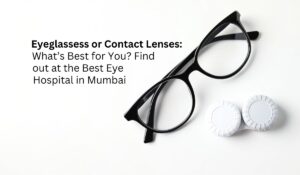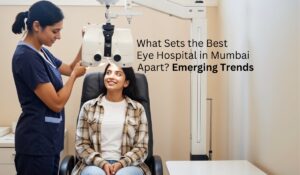Uncovering the science—and the truth—behind screen-friendly features
We are living in an era when our phones are virtually an extension of our own hands. Be it checking mails, browsing social media, or watching a series, our eyes are glued to screens all the time. To counter this virtual lifestyle, the majority of smartphones now have a feature called ‘Eye Comfort’ mode—otherwise referred to as Night Shift, Blue Light Filter, or Eye Care Mode.
At Tandon Eye Hospital, we frequently get asked the same question: “Does this actually do something for my eyes, or is it another marketing ploy?” So, let’s delve into the science behind these features, see how they work, and determine if they really do make a difference to your eye health.
What is Eye Comfort Mode, Really?
Eye Comfort mode is designed by smartphones to minimize the blue light emitted by their screen to your eyes. This is achieved by changing the color temperature of the screen—making it look warmer (more yellow or red hues) instead of cooler (blue or white hues). The logic here is simple: blue light is harsh on the eyes, especially in the evening or nighttime.
But why blue light?
Blue light is short-wavelength and high-energy. Because it scatters more, it produces more “visual noise,” adding to glare and making it more difficult for our eyes to focus—particularly in dim environments. In the long run, this can lead to eye strain, fatigue, dry eyes, as well as headaches.
Can Eye Comfort Mode Actually Help?
- Reduced Digital Eye Strain
One of the most frequent complaints these days is of digital eye strain, or computer vision syndrome. Symptoms from such a condition range from blurred vision and dryness to neck strain and fatigue. Blue light is a contributor, but certainly not the only one. Brightness, contrast, font size, and how long we stare at screens all contribute to the problem.
Enabling Eye Comfort mode assists by softening the appearance of the screen and making it less harsh, particularly in low-light surroundings. Numerous users find that it makes the screen easier on the eyes, especially during nighttime usage.
- Better Sleep Quality
Blue light also has a sneaky way of messing with our body’s sleep-wake cycle (circadian rhythm). It dampens the hormone melatonin, which is the one that helps us sleep. Therefore, using your phone in bed without filters makes it more difficult for you to sleep.
By moving screen tones away from blue in the evenings, Eye Comfort mode also reduces the disturbance of melatonin production, enabling an unbroken and more natural sleep.
That being said, the impact is different across individuals. While some get benefits instantly, others don’t experience much of a difference. Nevertheless, as part of a comprehensive eye-care regimen, it’s certainly a useful feature.
What the Research Says
Eye Comfort studies or blue light filter studies have show mixed results. There are some who advocate their use, particularly to enhance sleep and alleviate discomfort. Others indicate that merely cutting back on screen usage and adjusting the brightness and contrast could be a more effective factor than using the filters by themselves.
In short, Eye Comfort is useful—but not a magic solution. It must be viewed as one piece in a set of healthy screen practices.
Practical Tips from Tandon Eye Hospital
To truly protect your eyes in today’s digital world, here are some expert-backed tips to complement Eye Comfort mode:
🔹 Use Eye Comfort Mode—Especially in the Evening
Turn it on a few hours before bed to reduce blue light exposure and encourage better sleep.
🔹 Follow the 20-20-20 Rule
Every 20 minutes, look away from your screen for 20 seconds and focus on something 20 feet away. This helps reduce continuous strain on your eye muscles.
🔹 Adjust Your Screen Settings
Match your screen’s brightness with the ambient light around you. Too much contrast or glare can tire your eyes faster. Also, don’t hesitate to enlarge the text if you find yourself squinting.
🔹 Maintain Proper Posture and Distance
Hold your phone at least an arm’s length away, ideally at a slight downward angle. Good posture not only helps your back but also reduces eye strain.
🔹 Improve Sleep Hygiene
Try to avoid screens at least 30 minutes before bedtime. Create a calming nighttime routine that helps you wind down naturally.
So, What’s the Verdict?
Yes—Eye Comfort modes on smartphones can be beneficial, particularly when employed with consideration. They soften some of the brutality of screen light and can lead to more comfortable screen use and improved sleep. But they’re not a panacea. Real eye comfort results from a combination of intelligent features and wiser habits.
At Tandon Eye Hospital, we think that your eye health should have regular care, not digital filters. If you have ongoing eye discomfort, blurred vision, or sleep problems associated with screen time, it’s best to see an eye specialist. A thorough eye exam can eliminate underlying problems and point you in the direction of the best solutions for your lifestyle.
Technology is here to stay, but with the right habits and knowledge, we can welcome it without sacrificing our health. Use Eye Comfort mode, but also give your eyes the actual comfort they deserve—with care, rest, and regular check-ups at Tandon Eye Hospital.



